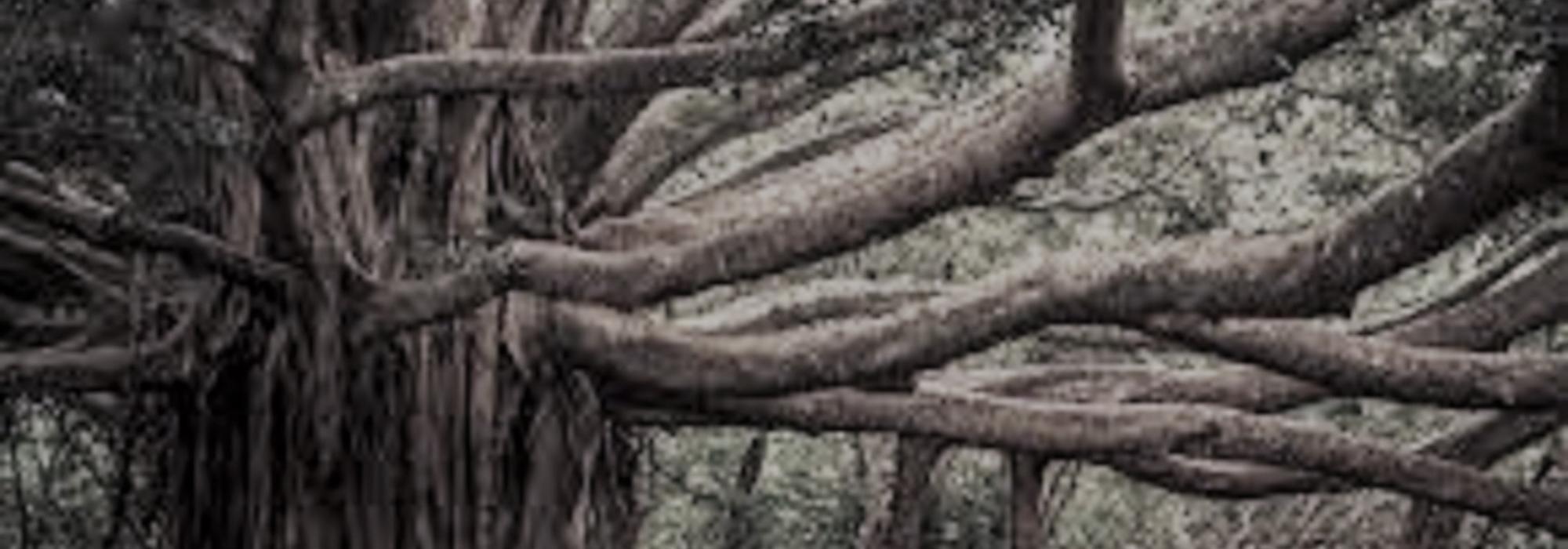Having now reflected upon the steps to attain the right level of eligibility, let us think once again about the four problems due to changing times.
1) The deterioration of the system of the four varṇas
The chief among the cardinal teachings of the Bhagavadgītā is to be established in one’s own dharma. One’s own dharma is determined by the four-fold varṇa system. Brāhmāna, kṣatriya, vaiṣya, śūdra - are all different varṇas. Their dharmas are different too. The following is the message. Arjuna must surely fight. If he does not fight, he incurs pāpa. This is so because fighting is the dharma of a kṣatriya. Arjuna was a kṣatriya. His obligation to fight came from the dharma of his varṇa. Thus the importance of one’s varṇa in the determination of one’s dharma is established.
In our era, however, jāti is splintered and manifold. The varṇa system of old is now loosening and disintegrating. How can we now determine what dharma is and is not? Such a question becomes valid now. Should we accept the admixture of jātis as correct? Or oppose it as improper? This is the question in front of us. To look for an answer to this question, it becomes important to think about the nature of such an admixture and its consequences.
Admixture is the mixture of jātis and clans. It is born out of physical relationships between man and woman. These are of two kinds 1. Born out of marriage. 2. Born outside of marriage.
We do not need to discuss the second kind. No country or religion has normalised such a practice. The expressed opinion of most is that it is an immoral or illegal practice. Even those who are in such a relationship are shy to show it publicly and try to hide it if they can. Such things can happen for whatever reason. Suffice it to say that such relationships are not generally accepted by society. Let us now move to the topic of admixture arising from marriage. The main reason for such a marriage is some mutually perceivable attractiveness in the man or woman. Qualities that engender such attractiveness can generally be one of the following.
1. Beauty 2. Wealth 3. Status or 4. Fame. These are not bad qualities. On the other hand, these are desirable. As far as a marriage’s main goals go, these are essential qualities as well. What then is the main goal of a marriage?
Marriage is not just a system for societal convenience but is something that refines and sanctifies the jīva. This is the fundamental difference between the Hindu people and those of other countries. Their perspective is different from our perspective.
We just said that the principal element of marriage is that it is a sanctifying institution. The institution has four key goals. 1. Practising dharma together. 2. Protecting the clan. 3. Blossoming the jīva’s inner qualities 4. Benefiting society.
Some of us might feel that the first two of these are not suited to our age. Practising dharma together is for the husband and wife to jointly participate in vows and charity, in rituals to propitiate the divine, and in weddings and other societal obligations. No śāstric rite is possible without the wife’s participation. At the end of daily worship, the wife has to offer water oblation along with her husband to perform kṛṣṇarpaṇam. A married wife thus has to take part in all dhārmic acts with her husband.
The dharma of the clan is begetting dhārmic offspring. The other aspects of such a dharma are clan-specific or jāti-specific rituals and the śrāddha for the ancestors that have to be performed by the successors of the generational line. These are what Arjuna indicated as -
kulakṣaye praṇaśyanti kuladharmāḥ sanātanāḥ
-BG 1-40
saṅkaro narakāyaiva kulaghnānāṃ kulasya ca.
patanti pitaro hyeṣāṃ luptapiṇḍodakakriyāḥ-BG 1-42
Elaborating on this is unnecessary here.
Another key benefit of marriage is the evolution of the jīva. Man and woman enjoy a symbiotic relationship as husband and wife. They become each other’s teachers. The sweet and soft progression of marriage is a moral education. As they are together during hardships or enjoyment or during despair or in determining goals, their hearts blossom and with valuable world-experience, both of them earn the know-how of what is suitable and what is not. Their natural impurities are gradually eroded and both the jīvas ripen. With ripening, the mind is elevated and veers away from the transient to the transcendental. The mind turns away from petty personal affections towards a universal concern for the world. This is the path to spiritual discernment. This is also the right practice towards morally elevating the world. Such moral and spiritual progress cannot rise from illicit relationships and stealthy trysts. Neither is it easy for admixed companionship; for, there is no influence from or on society.
During married life, interaction with relatives, society, and neighbours becomes necessary. Such interaction is mutually beneficial. The most important advantage of the institution of marriage is this benefit to society. This is another difference between the Hindus and the others. Whereas marriage is a personal event for others, it becomes a societal event for Hindus.
In recent days, some eminent personalities proffer the opinion that marriage is purely a personal affair. “Regardless of who the man or woman is, let them consort with whoever they want. It is enough if they are happy by themselves. What is it to us?” Those are the words of the satisfied and nourished; the words of those who have not encountered even the possibility of hardship. More so, these are the words of those who have no concern for the elevation of the jīva. That a marriage is for the benefit of just the couple is a narrow and myopic consideration. Marriage is for the welfare of society. It is society that has to deal with the after-effects of marriage such as offspring. Those who are weak, poor, handicapped, or unfortunate eagerly wait for a well-to-do family among their kin with an expectation of support. A single family’s well-being is dependent on the well-being of ten other families and at the same time can support ten others. This is a wonderful quality of the Hindu undivided family. It enables the practice of co-operation. It teaches the importance of giving, coming together, giving up something for others, as well as coping. Thus the institution of marriage becomes the foundational pillar for a familial feeling that encourages the practice of cooperation and nurtures society. It is for this reason that starting from the Harijans, all categories of Hindus from ancient times have considered marriage as concerning all of society. Binding rules that all kin have to be invited for the wedding, that all of them have to assent to giving away the bride, and that all kin have to bless the couple - reinforce the fact that marriage is not an occasion for just the individual but a social event.
When marriage is viewed from the perspective of these four goals enumerated above, it becomes clear that the effects of marriage are not just physical but also spiritual and are not just for pleasure but for elevating the jīva.
Having thus agreed that the spiritual and the absolute are important elements of human life, the primary considerations in marriage are the lineages of the bride and the groom, their family traditions and their adherence to dharma. Considerations such as physical form, wealth, and prestige become secondary. Whoever disregards these vital qualities that enhance the jīva and chooses form and wealth over clan and family will be guilty of paying a premium for non-essentials. They would have foregone lasting profits for transient gains. They obstruct their own spiritual welfare in favour of physical enjoyment. This is the danger in the admixture of categories and jātis.
As far as dharma goes, Bhagavān has said,
śreyān svadharmo viguṇaḥ paradharmāt svanuṣṭhitāt ||
-BG 18.47
which applies to the institution of marriage as well. Even though a girl belonging to one’s jāti may not be as beautiful as a girl of another jāti, even if a boy belonging to one’s own jāti is less wealthy and prestigious than another boy, they are better suited towards the performance of svadharma and the traditions of one’s own clan. She will participate in her dhārmic activities more willingly. He is inclined to maintain dharma more enthusiastically. The girl from the other jāti might be more beautiful but the practice of her husband’s dharma might not come as naturally to her. This is the fundamental principle.
Such is the disadvantage of admixture of classes. This is why Arjuna bemoaned:
strīṣu duṣṭāsu vārṣṇeya jāyate varṇasaṅkaraḥ ||
-BG 1.41
There are ample examples of this admixture even during the age of the Mahābhārata. But this happened naturally, not of one’s volition. It happened due to the innate progress of the human race. We have seen the effects of time already. Just as a fruit that has just begun to decay decays even faster, it is quite natural for the admixture that started during the Dvāpara-yuga to accelerate during Kaliyuga.
To be continued...
The present series is a modern English translation of DVG’s Kendra Sahitya Akademi Award-winning work, Bhagavad-gītā-tātparya or Jīvana-dharma-yoga. The translators wish to express their thanks to Śatāvadhāni R Ganesh for his valuable feedback and to Hari Ravikumar for his astute edits.















































